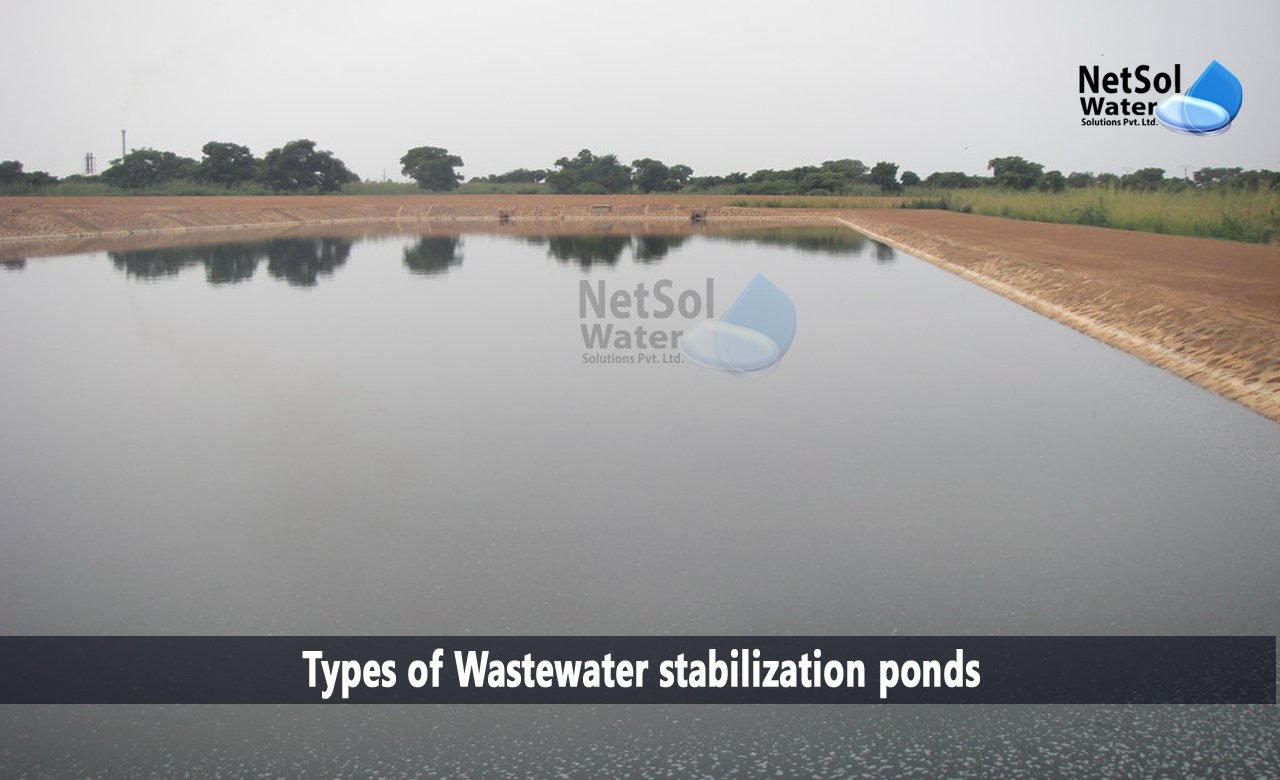How many types of Wastewater stabilization ponds?
Wastewater Stabilization Ponds (WSPs) are sizable, artificial bodies of water where blackwater, greywater, or feces-containing sludge is treated, using natural processes and the effects of the sun, wind, bacteria, and algae. You can use the ponds separately or connect them in a series for better treatment. There are three basic types of ponds: anaerobic, facultative, and aerobic (maturation), each with unique design and treatment features.
For oil and BOD removal, Waste stabilization ponds or WSPs are inexpensive, and pathogen elimination is effective. Large surface areas and skilled design are necessary, though. The effluent is suitable for reuse in agriculture, since it still contains nutrients (such as N and P), but it should not be directly recharged into surface waters.
Types of wastewater stabilization ponds
1: Anaerobic Ponds
Anaerobic ponds' main purpose is to lower BOD levels, which can go down by 40 to 85%. The entire purpose of the anaerobic pond:
1. Undigested material and non-biodegradable solids should be settled as bottom sludge.
2. Dissolving organic substances is advised.
3. Organic matter that degrades should be broken down.
Anaerobic digestion takes place in the resultant sludge layer after the sedimentation of settable solids, just like in septic tanks. Biogas is created during anaerobic digestion and might be captured, by enclosing the anaerobic pond with a floating plastic membrane. If enough can be gathered, the recovered biogas can be used for energy production, cooking, and heating (biogas combustion and biogas electricity small-scale).
2: Facultative Treatment Ponds (FTPs)
Treatment in Facultative wastewater stabilization ponds are the simplest, because they have an anaerobic zone deeper in the water and an aerobic zone close to the surface.
They are designed to remove BOD from water and can treat water, with BOD levels ranging from 100 to 400 kg/ha/day, or 10 to 40 g/m2/day at temperatures above 20°C.
Due to vertical mixing, wind may contribute more oxygen to the water. Oxygen cannot be maintained in the lower levels if the pond is too deep, the color is too dark to allow light to fully pass through, or if the BOD and COD in the bottom layer exceed the supply.
Due to the pond algae's photosynthetic activity, the dissolved oxygen concentration changes throughout the day. The pond will be predominantly anaerobic before daybreak, and predominantly aerobic during peak sun exposure due to algae activity.
The purpose of the facultative pond:
1. Sedimentation and aerobic oxidation of organic substances, can be used to further treat wastewater.
2. If pH increases, to lessen odour and some disease-causing bacteria.
3. The best way to keep residues is as bottom sludge.
3: Aerobic/ Maturation Ponds
Unlike facultative and anaerobic ponds, which are meant to eliminate BOD, maturation or polishing ponds are meant to keep suspended stable solids, while removing pathogens.
The bacteriological quality of the final effluent determines the number and size of maturation ponds. In facultative and maturation ponds, the main mechanisms for faecal bacterial elimination include HRT, temperature, high pH (> 9), and high light intensity.
Viruses and other microbes are also gotten rid of. This kind of pond is also efficient in removing most of the nitrogen and phosphorus from wastewater, when paired with algae and fish harvesting.
Conclusion
Since, wastewater stabilization ponds utilize no energy in comparison to other wastewater treatment methods, and need minimally sophisticated infrastructure, they also offer the advantage of having very cheap running costs.
This makes them especially ideal for developing countries, where many conventional wastewater treatment plants have failed, because of insufficient revenue from water and sewer utilities, to cover the plant's electrical costs.
What do we have to offer?
Stabilization ponds in wastewater treatment may be the greatest option for your company. The first step is to determine how much water you need and how good your water is.
To assist you with this process, Netsol Water provide a wide range of water and wastewater treatment plants. For further information or to make a purchase, please contact us at +91-9650608473 or enquiry@netsolwater.com



